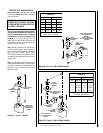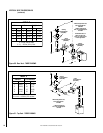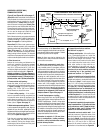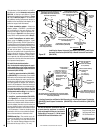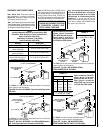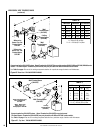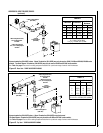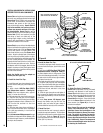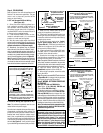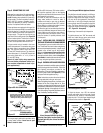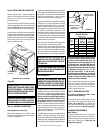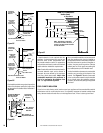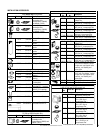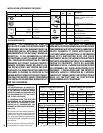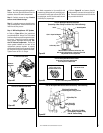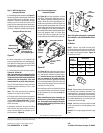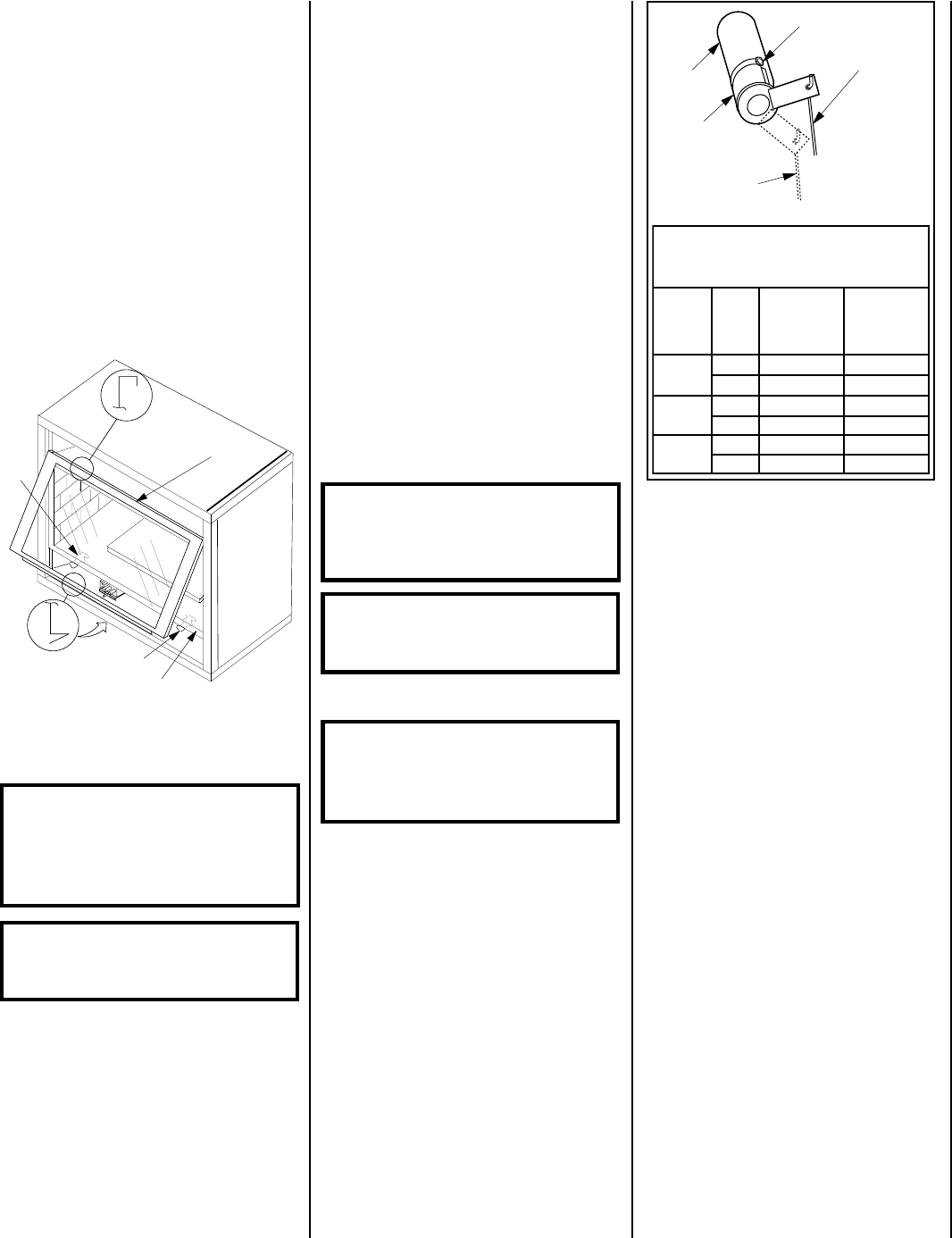
23
NOTE: DIAGRAMS & ILLUSTRATIONS NOT TO SCALE.
Latch
Latch
Glass Door
Firebox Floor
Bottom Vee-flange
Door Frame
Top Flange
Door Frame
RIAYROTCAF
GNITTESRETTUHS
)mm(sehcni
sledoM
TD,D
RD&
saG
epyT
snoitacilppA
ehtgnisu
ecnailppA
tneVpoT
snoitacilppA
ehtgnisu
ecnailppA
tneVraeR
005
.taN23/3)83.2(23/3)83.2(
.porP)81.3(8/18/3)25.9(
006
.taN23/3)83.2()83.2(23/3
.porP8/3)25.9(8/3)25.9(
008
.taN61/3)67.4()67.4(61/3
.porP2/1)31()31(2/1
Adjustment Rod Up
(Fully Open Position)
Air Shutter
Burner Tube
Adjusting Set Screw
Adjustment Rod Down
(minimum air
opening position)
Figure 57
Figure 56
INSTALLING THE GLASS DOOR
FINISHING REQUIREMENTS
Wall Details
Step 11. HOOD INSTALLATION
Appliances operated with air shutter openings that
are too large will exhibit flames that are blue and
transparent. These weak, blue and transparent
flames are termed anemic. If the air shutter
opening is too small sooting may develop.
Sooting is indicated by black puffs developing
at the tips of very long orange flames. Sooting
results in black deposits forming on the logs,
appliance inside surfaces and on exterior sur-
faces adjacent to the vent termination. Sooting
is caused by incomplete combustion in the
flames and lack of combustion air entering the
air shutter opening. To achieve a warm yellow
to orange flame with an orange body that does
not soot, the shutter opening must be adjusted
between these two extremes.
No smoke or soot should be present. Reposition
the logs if flames impinge on any of them.
If the logs are properly positioned and sooting
conditions exist, the air shutter opening on the
main burner tube should be adjusted. Normally,
the more offsets in the vent system, the greater
the need for the air shutter to be opened further.
To adjust the flame, move the adjustment rod
(located in the lower control area) up or down
to increase or reduce the air shutter opening,
respectively. Initially, always position the air
shutter to the factory setting (the minimum air
opening position) as shown in
Figure 57
. This
can be done by pulling the adjustment rod all
the way down. Allow the burner to operate for
at least 15 minutes. Observe the flame continu-
ously. If it appears weak or sooty as previously
described, adjust the air shutter by pushing or
pulling on the adjustment rod until the flame
appearance is as desired.
The adjustment rod and associated adjustable air
shutter is patented technology. Flame adjust-
ments can be made quickly and accurately to taste
without the need of disassembling the appliance
and waiting for 30 minutes after each adjustment.
Note: If the flame still appears anemic with the
air shutter closed all the way against the stop
(usually a result of lengthy vertical runs), turn
the appliance off, turn the gas supply off, wait
for the parts to cool, remove the glass door and
logs to access the air shutter. The shutter is
prevented from actually closing all the way by
an adjustment set screw (see Figure 57 ). Re-
move this screw using a
¹⁄₄
inch nut driver.
Reinstall the logs and glass door, turn the gas
back on and then restart the appliance. After 30
minutes, reobserve the flame. Adjust the air
shutter as previously described.
When satisfied that the appliance operates
properly, proceed to finish the installation.
Leave the control knob in the ON position
and the remote switch OFF. Close the lower
control compartment door.
Burner Adjustment
Step 9. INSTALLING THE GLASS DOOR
Retrieve the glass door. Visually inspect the
gasket on the backside of the frame. Gasket
surface must be clean, free of irregularities
and seated firmly.
Position the door in front of the firebox opening
with the bottom of the door held away from the
fireplace
(Figure 56
). Hook the top flange of the
door frame over the top of the firebox frame.
Let the bottom of the door frame swing gently
in towards the fireplace ensuring that the gas-
ket seats evenly as the door frame draws shut.
Fasten the two latches located underneath the
firebox floor to the door's vee-flange. Close
both the latches securely.
WARNING: AIR SHUTTER ADJUSTMENT
SHOULD ONLY BE PERFORMED BY A
QUALIFIED PROFESSIONAL SERVICE
TECHNICIAN.
IMPORTANT: ENSURE THAT THE FRONT
GLASS PANEL IS IN PLACE AND SEALED
DURING ADJUSTMENT.
CAUTION: THE ADJUSTMENT ROD AND
NEARBY APPLIANCE SURFACES ARE HOT.
EXERCISE CAUTION TO AVOID INJURY
WHILE ADJUSTING FLAME APPEARANCE.
WARNING: NEVER OPERATE THE APPLI-
ANCE WITHOUT THE FRONT GLASS EN-
CLOSURE PANEL IN PLACE AND SECURE.
WARNING: HANDLE THIS GLASS WITH EX-
TREME CARE! THE GLASS PANEL IS SUS-
CEPTIBLE TO DAMAGE — DO NOT SCRATCH
WHILE HANDLING OR WHILE RE-INSTALL-
ING THE GLASS DOOR FRAME.
Step 10. BURNER ADJUSTMENTS
Flame Appearance and sooting
Proper flame appearance is a matter of taste.
Generally, most people prefer the warm glow of
a yellow to orange flame.
Complete finished interior wall. To install the
appliance facing flush with the finished wall,
position framework to accommodate the thick-
ness of the finished wall (
Figure 58, and
Figure 59
on page 24
).
All of these appliances must have hoods
installed prior to operating.
On all clean face units, slide the hood into the
slots on the lower edge of the radiant panel
(Figure 58 on page 24).
On louvered face
units, slide the hood into the slots on the lower
edge of the cabinet top (
Figure 59 on page 24
).



